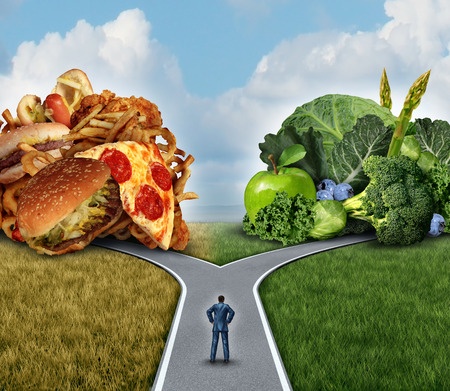Green Eating
 What do you think of when you hear “eating green?” You probably think about eating more green vegetables, right? Although we encourage everyone to eat more green and colorful vegetables and fruits as part of a balanced whole foods diet, that’s not what we're referring to when we talk about eating green.
What do you think of when you hear “eating green?” You probably think about eating more green vegetables, right? Although we encourage everyone to eat more green and colorful vegetables and fruits as part of a balanced whole foods diet, that’s not what we're referring to when we talk about eating green.
Eating green means:
- eating with intention
- taking into account the environmental impact of how a food was grown or produced
- what, if any, chemicals were used
- how far the food traveled
- what impact the food has on the community in which it was produced or on the farmworkers who grew it
Eating green means:
Saying YES to organic agriculture. It means supporting farmers who work with, not against nature, building rich living soils that nourish the plants and ultimately provide healthy chemical-free food for us that is nutrient dense, all while protecting the environment from contamination.
Eating green means:
Saying NO to GMO foods and chemical farming that is so harmful to our health, degrades the soil, pollutes the air, and contaminates water. It also means saying no to food that has traveled many miles to reach your plate and instead choosing food grown locally, which builds relationships and supports farms that provide our community with clean nutritious food while protecting our environment.
Eating green means:
Choosing whole foods instead of processed foods, which use a lot of energy in their production including transportation and packaging. When we eat green, we are eating in harmony with nature, minimizing our impact on the environment while maximizing our health.
Here are four great ways to eat clean and green:
Choose organic
Eating organically grown food means you are keeping toxic chemicals off your plate, out of the environment, and out of your body. Organic farmers work with nature, farming in ways that enrich soils, create habitat, protect pollinators, and promote plant diversity while protecting our water, air, and bodies from chemical pollution. Choose local, organic meat, poultry and dairy products from animals raised on pasture, not fed gmo grains, and not given antibiotics or growth hormones. Most animal products sold in the U.S. come from huge confined animal operations known as CAFOs or factory farms. These animals live shortened lives under very restrictive and stressful conditions and these giant operations are major environmental polluters as well as a major factor in the development of resistant bacteria.
Avoid GMO foods
GMO foods make up over 70% of all processed foods sold in the U.S. The top 5 GMO crops grown are corn, soy, canola, sugar beets and cottonseed, which are processed into hundreds of ingredients used in processed foods. These crops are engineered to withstand massive amounts of chemicals that are harmful to our health, destroy habitat and contaminate water, air and soil.
Buy Local
Spend your food dollars on locally-grown organic food. Purchasing locally-grown food keeps dollars circulating in our community while reducing the number of miles food travels to reach your plate. Eating local in our northern clime can be a bit tricky but it’s doable by supporting farmers markets, joining a CSA or shopping at Oryana, your community cooperative, which supports local organic agriculture by stocking a huge selection of local products year round. Or, try planting your own garden, which is a great way to eat clean and green.
Eat in season
Here in northern Michigan we have a huge variety of locally-grown food available nearly year round. Waiting for and eating those foods as they come into season reduces the environmental impact of food needing to be transported across the country. Preserving food in season by canning, freezing, drying, pickling or fermenting means we have the bounty of our local harvest all year long.